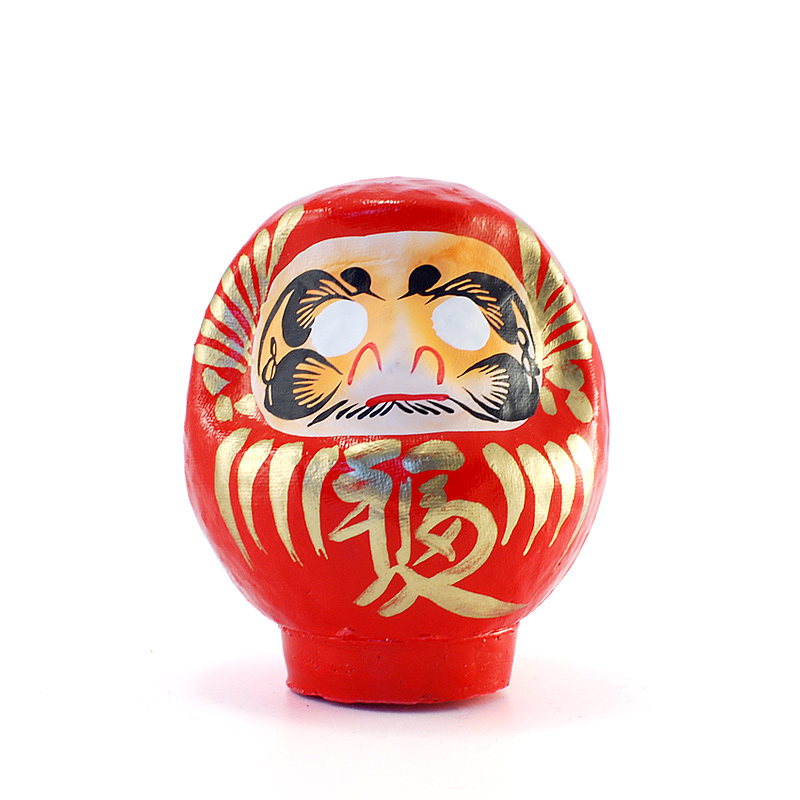Daruma

Daruma (yap. 達磨 or だ る ま) is a Japanese traditional doll-doll, personifying Bodhidharma, in Japanese syncretic mythology - a deity that brings happiness.
The doll is made of wood, papier-mache or paper and has no hands and feet: according to legend, after nine years of meditation, Bodhidharma atrophied limbs. The doll is usually painted in red or, rarely, in green, yellow or white. It depicts a beard and mustache, but the eyes are drawn without pupils.The doll is made of wood, papier-mache or paper and has no hands and feet: according to legend, after nine years of meditation, Bodhidharma atrophied limbs. The doll is usually painted in red or, rarely, in green, yellow or white. It depicts a beard and mustache, but the eyes are drawn without pupils.
Daruma is used in the annual New Year's ritual of making wishes: her owner, after making a wish, draws a pupil in one of the puppet's eyes. On the chin of the Daruma, the name of its owner is often drawn. During the year Daruma is kept at home in a conspicuous place, next to other domestic objects of worship, for example, the home Buddhist altar bucudan. If, by the next new year, the desire comes true, the daranga finishes the second eye, and if not - the doll is taken to the temple, burned and purchased a new one. The burning of the darumas is a ritual of purification, so that the Kami realizes that the desire has not abandoned its goal, but is looking for other ways of its realization.Like a tumbler or a vani-vstanka, the darum's center of gravity is shifted to the bottom: if you tilt it, it returns to the vertical position. This symbolizes the steadfastness of the aspirations of its owner.
Usually darumas are sold in temples at a price of 500 yen for small dolls (up to 5 centimeters in height) to 10 thousand - for large (about 60 centimeters and above). As a rule, it is possible to burn the daruma only in the temple where it was purchased - for this purpose it is stamped with the temple. It is customary to buy no more than one darum a year.The tradition came from China during the Edo times and was particularly popular among the Nagasaki traders who belonged to the Obaku Zen Buddhist school, and then spread throughout Japan.
The doll is usually painted in red, as in the Middle Ages it was believed that the red color repels the demons that cause smallpox.At the end of the XIX century, in the Abramtsevo (Moscow region) artist Sergey Malyutin and turner Vasily Zvezdochkin, taking as a basis the figure of Daruma and the principle of chiseled wooden eggs, put one into one, created a toy that is now known all over the world under the name "Matryoshka" .
















